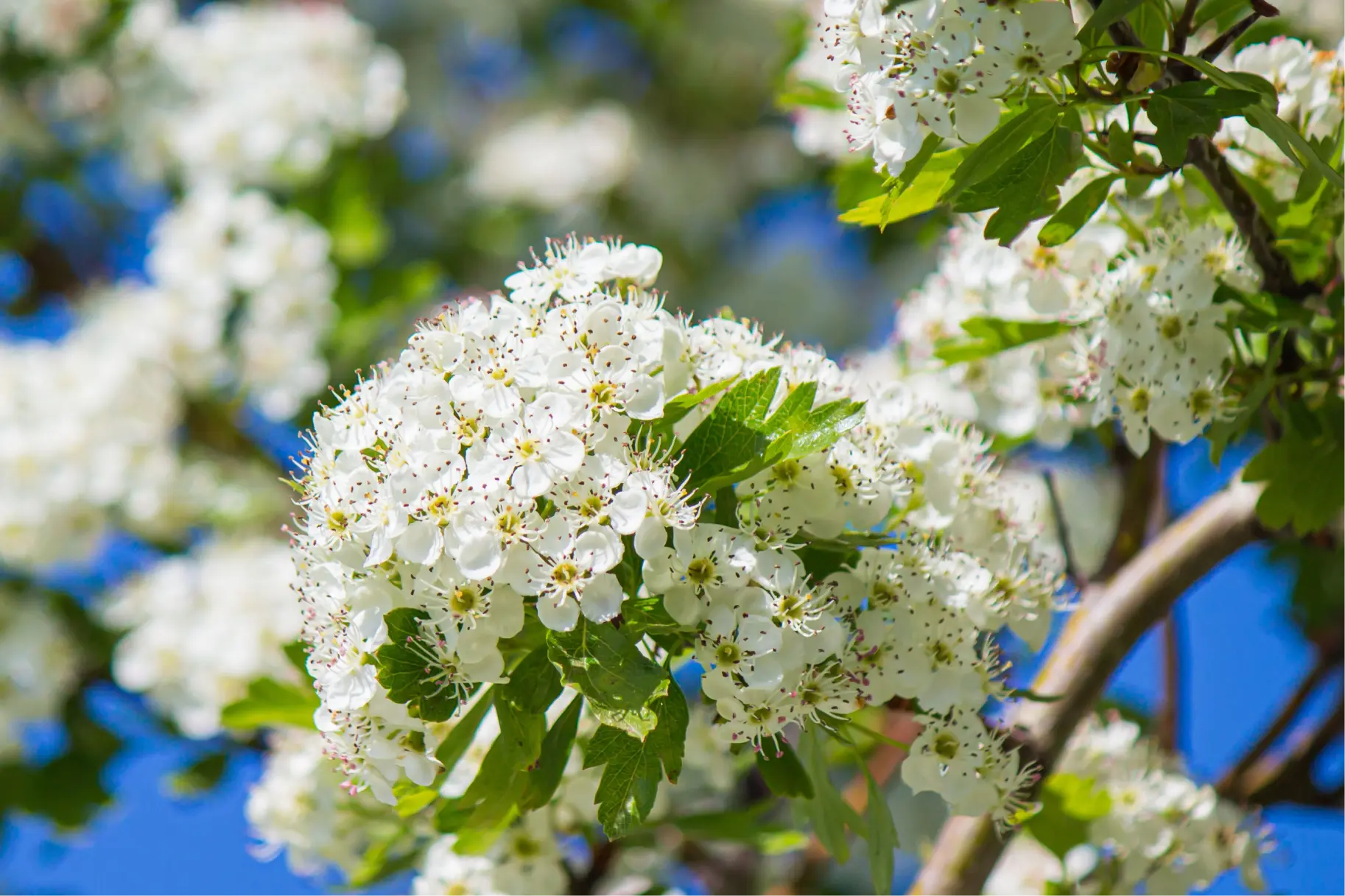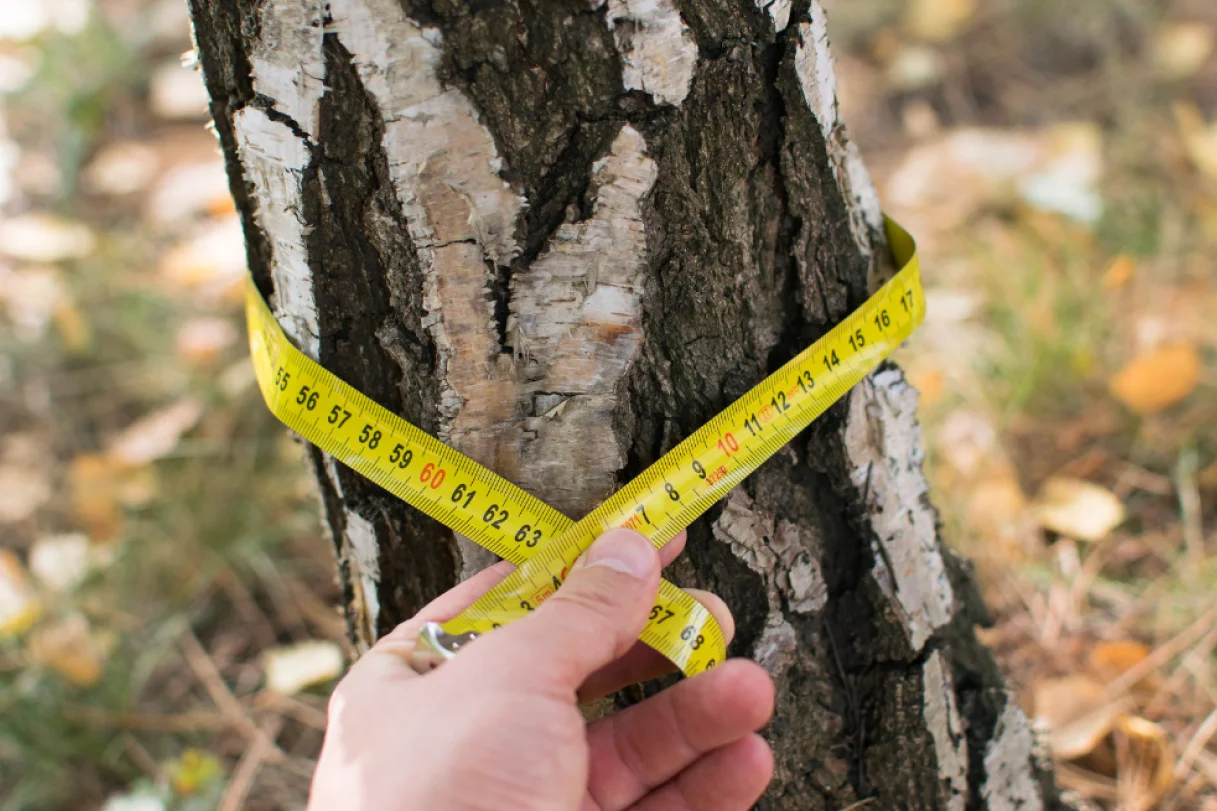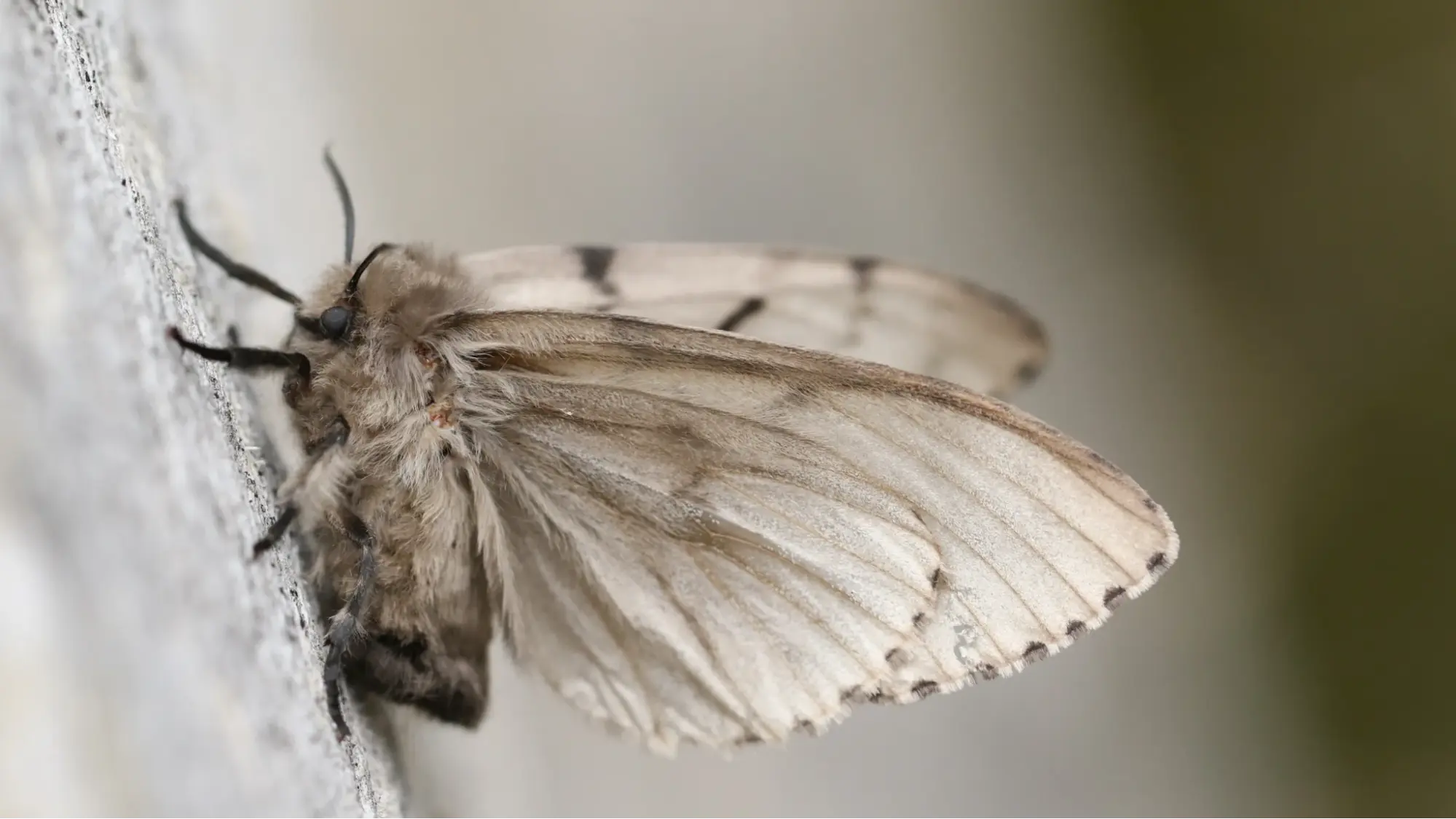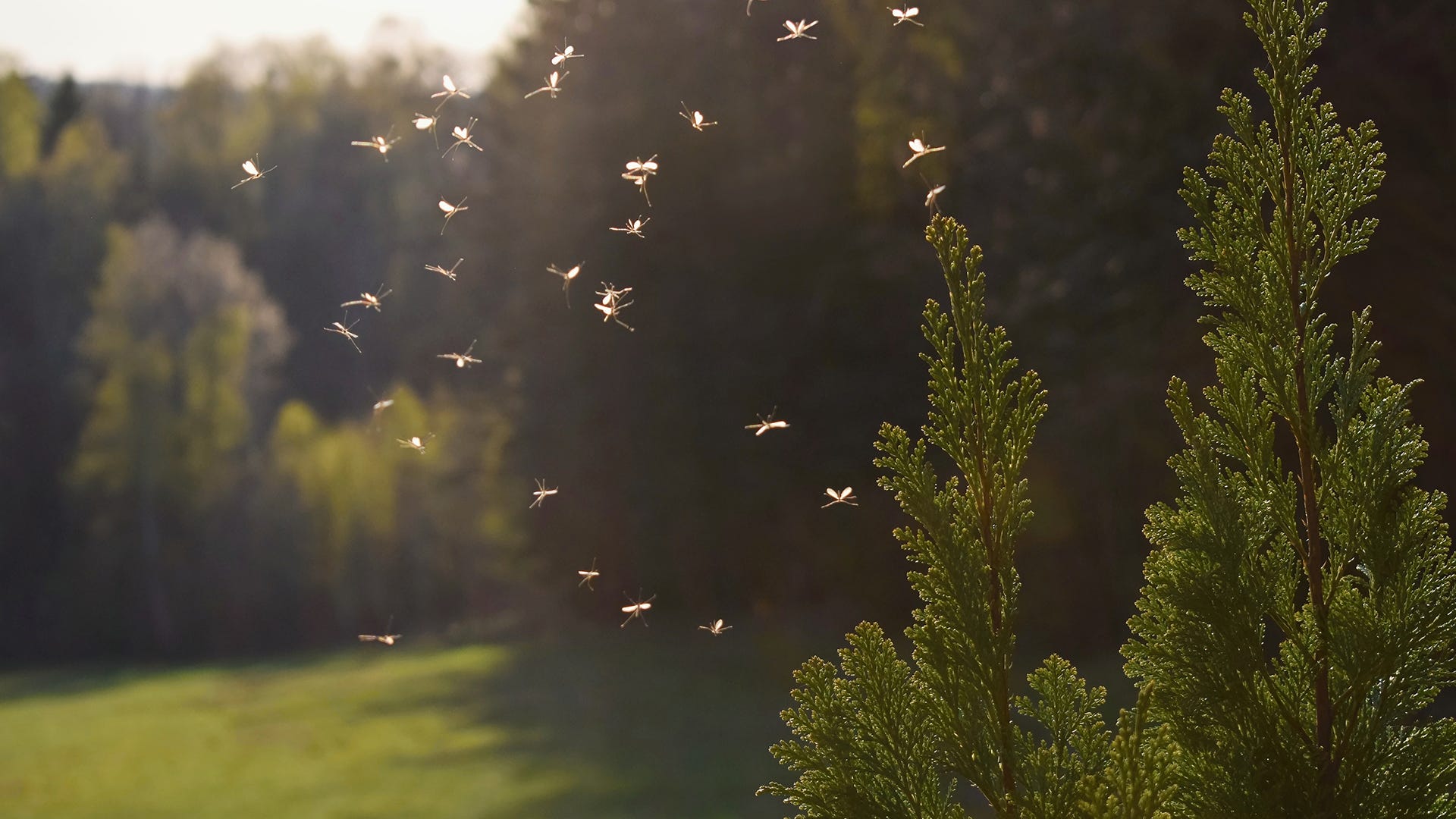Growing and caring for a Washington Hawthorn tree can be a rewarding experience for any gardener. Known for its stunning flowers, vibrant foliage, and ability to attract wildlife, this adaptable tree deserves a special place in your garden. The Washington Hawthorn tree leaves are glossy and provide seasonal interest, adding both beauty and shade. For optimal growth, plant your tree in an area with full sun and well-drained soil; it prefers slightly acidic to neutral pH levels. When planting, make the hole twice as wide as the root ball to encourage healthy root expansion, and water regularly during the first year until a strong root system establishes.
One of the most striking features of the Washington Hawthorn tree is its flower display in late spring. Small clusters of white blooms cover the branches, attracting pollinators like bees and butterflies and ensuring a healthy fruit set later in the season. Its moderate growth rate makes it ideal for small yards or as an ornamental feature.
Pruning is essential for maintaining the tree’s shape and removing dead or diseased branches during dormancy. Applying a slow-release, balanced fertilizer once a year helps keep the tree vigorous and healthy.
Overall, the Washington Hawthorn tree, with its glossy leaves, elegant flowers, and manageable size, is an essential addition to any garden. With proper care, it can thrive for many years, providing both aesthetic appeal and ecological benefits.
What Is Washington Hawthorn Tree?
So, the main question for us: What is a Washington Hawthorn? Washington Hawthorne tree (Crataegus phaenopyrum), also known as Southern Haw or Downy thornapple, is a deciduous tree native to the southeastern United States . This beautiful four-season specimen tree offers something attractive about itself all year round. It bursts into a profusion of white flowers in spring, changes to bright red berries that persist through winter after which vibrant fall foliage appears before dropping the leaves for winter dormancy.
Washington Hawthorns are often used as ornamental trees in landscapes because they have moderate size and pleasing appearance . They usually reach heights between 25-30 feet tall with spreads of 20-25 feet wide making them ideal for city gardens, parks and residential areas where space is limited . Additionally, dense leafage along thorny branches makes them excellent privacy screens against winds .
The Washington hawthorn has glossy dark green leaves which turn shades of orange ,red or purple in autumn giving it an added decorative feature . The bark starts off smooth and grey when young but becomes rougher as it ages thus adding character to its overall look. washington hawthorn tree pictures often show them covered in clusters of small white flowers attracting many different types pollinators.
Another value of this tree lies on its ecological benefits since birds find refuge here while feasting on its fruits during colder months . Birds are especially attracted by bright red berries that persist even after other food sources have been exhausted making them highly visible against a dull landscape. In general terms therefore; these qualities make Washington hawthorn an adaptable addition to any garden setting throughout the year.
What Does a Washington Hawthorn Tree Look Like?
The Washington Hawthorn tree is a medium-sized ornamental tree, typically reaching 15–30 feet in height with a similar spread. Its glossy, green Washington Hawthorn tree leaves provide seasonal interest, turning yellow or red in the fall. In late spring, the tree produces clusters of fragrant white flowering Washington Hawthorn tree blooms that attract pollinators like bees and butterflies.
By late summer and fall, the tree develops small, bright red Washington Hawthorn berries that not only enhance its visual appeal but also support local wildlife. Many varieties feature sharp Washington Hawthorn tree thorns, adding natural protection and a distinctive textured appearance. Overall, the combination of glossy leaves, delicate white flowers, bright red fruit, and thorned branches makes this tree a striking addition to gardens and landscapes.
Washington Hawthorn Tree Pros and Cons
The Washington Hawthorn tree is a popular choice for gardeners due to its beauty and adaptability, but like any tree, it has both advantages and drawbacks. Here’s a quick overview to help you decide if it’s right for your garden:
Pros
-
Beautiful white flowers in late spring that attract pollinators
-
Glossy Washington Hawthorn tree leaves that add seasonal interest
-
Moderate growth rate suitable for small yards or ornamental planting
-
Provides shade and habitat for birds and beneficial insects
-
Low-maintenance once established
Cons
-
Can be prone to diseases like leaf spot or fire blight
-
Thorns may pose a hazard in high-traffic areas
-
Fruit can drop and create additional cleanup
-
Requires annual pruning to maintain shape and health
Washington Hawthorn Care
Taking care of Washington Hawthorn trees means knowing how they grow, what they need during different seasons and what problems they are likely to face. These plants are pretty easy to maintain but they do require some special attention for them to flourish well in your compound.

To begin with, when planting your Washington Hawthorn tree, choose a location with full sun exposure. While partial shade is tolerated, maximum growth, flowering, and fruiting are achieved under full sunlight. The soil should be well-drained, though these trees can adapt to a variety of soil types as long as the pH is slightly acidic to neutral.
Watering is particularly important during the first year to establish a strong root system. Once established, the Washington Hawthorn tree is quite drought-tolerant, requiring extra watering only during prolonged dry periods. Applying mulch around the base helps conserve moisture, regulate soil temperature, and protect roots during hot weather.
Pruning is essential for maintaining the tree’s shape, encouraging flowering Washington Hawthorn tree displays, and preventing disease. Regular trimming removes dead or diseased branches and reduces risks of rust infection, leaf blight, and other common issues. Using a balanced slow-release fertilizer in early spring promotes healthy growth, vibrant Washington Hawthorn tree leaves, and abundant Washington Hawthorn berries and fruit.
Here’s a quick overview of key characteristics:
| Feature | Description |
|---|---|
| Washington Hawthorn tree lifespan | Typically 50–70 years with proper care |
| Washington Hawthorn tree size | Medium-sized, usually 15–30 feet tall and wide |
| Flowering Washington Hawthorn tree | Produces clusters of white flowers in late spring |
| Washington Hawthorn fruit | Small pome fruits, often red, that persist into fall |
| Washington Hawthorn leaf | Glossy, green leaves that provide seasonal interest |
| Washington Hawthorn tree thorns | Sharp thorns along branches, providing natural protection |
| Washington Hawthorn berries | Attract birds and wildlife, supporting local ecosystems |
What Are Types of Washington Hawthorns?
Moreover, pests such as aphids and caterpillars may occasionally infest Washington Hawthorn trees, so it’s important to regularly inspect the tree for any signs of damage and apply appropriate treatments as needed.
So, Washington Hawthorn trees are resilient and rewarding, providing years of beauty when given proper care. Their moderate Washington Hawthorn tree growth rate allows them to establish well in gardens without becoming unmanageable, while the Washington Hawthorn tree height typically ranges from 15 to 30 feet, making them suitable for a variety of landscape sizes.
To sum up, many gardeners choose Washington Hawthorn for their ornamental value and practicality. Understanding the Washington Hawthorn native range and its close relatives helps you select a tree that matches both your aesthetic preferences and functional needs. For a traditional look, the standard Washington Hawthorn works beautifully, while more compact varieties are ideal for smaller yards or formal garden designs.
Propagating Washington Hawthorn
One way to enrich your garden with this beautiful plant is by propagating it. Collect seeds from mature trees and follow these steps:
Harvest berries in autumn when they turn bright red – this is the sign that washington hawthorn fruits have ripened enough to contain viable seeds inside them. Soak gathered berries into water for a while until their pulp softens making extraction easier.
Stratification is necessary because it imitates natural winter conditions required for breaking seed dormancy stage so after removing seed coat put seeds between layers of sand mixed with peat moss (moisture content around 20%) then keep containers with them refrigerated at temperature range within 35-41 F (2-5 C) for approximately 3-4 months.
When spring comes after stratification period has passed sow these pre-chilled seeds into pots filled with well drained potting mix. Keep soil consistently moist but not waterlogged, place pots at location where receives indirect sunlight.
Where to Plant Washington Hawthorn Tree?
Choosing the right location is key to ensuring a healthy Washington Hawthorn tree. These trees thrive in full sun, which promotes optimal flowering Washington Hawthorn tree displays, abundant Washington Hawthorn berries, and strong growth. While they can tolerate partial shade, too little sunlight may reduce flowering and fruiting.
The soil should be well-drained but can vary in type, as long as it is slightly acidic to neutral. Avoid areas with standing water or poor drainage, as this can lead to root problems. Additionally, consider the Washington Hawthorn tree height and growth rate when planting near buildings, walkways, or other trees to allow enough space for the canopy to expand safely.
For a practical and visually appealing landscape, plant Washington Hawthorn where it can serve as an ornamental focal point, provide shade, or attract birds with its flowers and fruit. Mulching around the base will help retain moisture and protect roots during hot or dry periods.
How to Grow Washington Hawthorn From Seed?
Now, we know where to plant Washington Hawthorn. But how to grow it?
Growing a Washington Hawthorn tree from seed is a rewarding process that allows you to nurture the tree from its earliest stages. By starting from seed, you can observe the development of shiny Washington Hawthorn tree leaves, clusters of white flowers, and bright red Washington Hawthorn berries as the tree matures. Follow these steps to ensure healthy growth:
Steps to Grow Washington Hawthorn from Seed
1. Germination:
-
Germination can be slow, taking several weeks or even months before seedlings emerge above the soil.
-
Be patient, as some Washington Hawthorn tree species require more time to sprout.
2. Initial care for seedlings:
-
Once two to three sets of leaves appear on each seedling, transfer them into larger containers or prepare for transplant outdoors.
-
Provide full sun during the day and water regularly until seedlings are established, usually over three to four weeks, then gradually reduce watering frequency.
3. Transplanting outdoors:
-
When seedlings have developed strong roots and multiple leaf sets, move them to larger pots or directly into your garden.
-
Choose a sunny location with well-drained soil for best growth.
-
Dig a hole twice as wide as the root ball but no deeper, fill it with soil, eliminate air pockets, and water thoroughly to settle the roots.
4. Ongoing care:
-
Water regularly, especially during dry periods, to encourage a strong root system.
-
Apply fertilizer occasionally and perform light pruning as needed to maintain shape and health.
-
Protect young plants from pests and diseases, which are more likely during the early stages of growth.
5. Long-term growth:
-
As your Washington Hawthorn tree matures, it will develop its signature features: glossy leaves, white flower clusters, and red berries.
-
Continued care through proper watering, occasional fertilization, and pruning ensures a healthy, thriving tree for many years.
How to Prune a Washington Hawthorn Tree?
Pruning is essential for maintaining the health, shape, and safety of a Washington Hawthorn tree. The best time to prune is during Washington Hawthorn tree fall or late winter while the tree is dormant, as this minimizes stress and reduces the risk of disease. Regular pruning helps improve airflow through the canopy, encourages healthy growth, and enhances the tree’s signature flowering and fruiting displays.
When planning your pruning, consider how big Washington Hawthorn trees grow. With a typical height of 15–30 feet and a similar spread, it’s important to maintain a balanced canopy that does not overcrowd nearby structures or other plants. Focus on removing dead, damaged, or diseased branches first, then thin out crowded areas to allow sunlight to reach the inner leaves and fruit.
For young trees, light formative pruning helps establish a strong structure, while mature trees benefit from selective trimming to maintain their natural shape and improve flowering. Always use clean, sharp tools and make cuts just above a leaf node or branch junction to promote quick healing. Regular attention to pruning ensures your Washington Hawthorn remains healthy, visually appealing, and safe for your garden.
In conclusion, growing Washington Hawthorn from seed is a rewarding process. But if your tree faces structural issues or severe disease, don't hesitate to seek help from trusted tree removal Toronto professionals to maintain the safety and aesthetics of your garden.
FAQ
How big does a Washington Hawthorn tree get?
The Washington Hawthorn tree is a medium-sized ornamental tree, typically growing 15–30 feet tall with a similar spread. Its moderate size makes it suitable for small yards, city gardens, and residential areas. When planted in optimal conditions, it develops a dense canopy that provides shade and visual appeal. The spread of the branches should be considered when selecting a planting location to allow adequate space for growth.
How fast do Washington Hawthorn trees grow?
Washington Hawthorn trees have a moderate growth rate, usually adding about 12–24 inches per year. This steady growth allows them to establish well without becoming unmanageable. Young trees require regular watering and care to reach their full potential, especially during the first few years. Their growth rate also makes them ideal for ornamental purposes, providing beauty without overwhelming a garden space.
What is the lifespan of a Washington Hawthorn tree?
With proper care, a Washington Hawthorn tree lifespan typically ranges from 50 to 70 years. Regular pruning, pest control, and fertilization help extend the tree’s health and longevity. Choosing a suitable planting location with well-drained soil and full sun also supports a long life. These trees can remain attractive and productive for decades, offering flowers, berries, and shade throughout their lifespan.
What do Washington Hawthorn tree leaves look like?
The Washington Hawthorn tree leaves are glossy and dark green during the growing season, providing visual interest and shade. In autumn, the foliage turns vibrant shades of red, orange, or purple, enhancing the tree’s ornamental appeal. Leaves are generally small to medium-sized with a slightly serrated edge. Healthy leaves indicate a well-maintained tree, while discolored or damaged leaves may signal pests or disease.
What are the flowering and fruiting characteristics of Washington Hawthorn?
A flowering Washington Hawthorn tree produces clusters of fragrant white flowers in late spring, attracting pollinators like bees and butterflies. By late summer and fall, the tree develops small, bright red Washington Hawthorn berries that persist into winter. These fruits provide food for birds and other wildlife while enhancing the tree’s aesthetic value. The combination of flowers and berries makes this tree a year-round focal point in gardens.
Are Washington Hawthorn trees thorny?
Yes, many varieties have sharp Washington Hawthorn tree thorns along their branches. These thorns provide natural protection against animals but can pose a hazard in high-traffic areas or near walkways. Regular pruning with the rigth tree service can help manage thorny branches and maintain the tree’s shape. Despite the thorns, they add a distinctive texture and character to the tree’s appearance.











